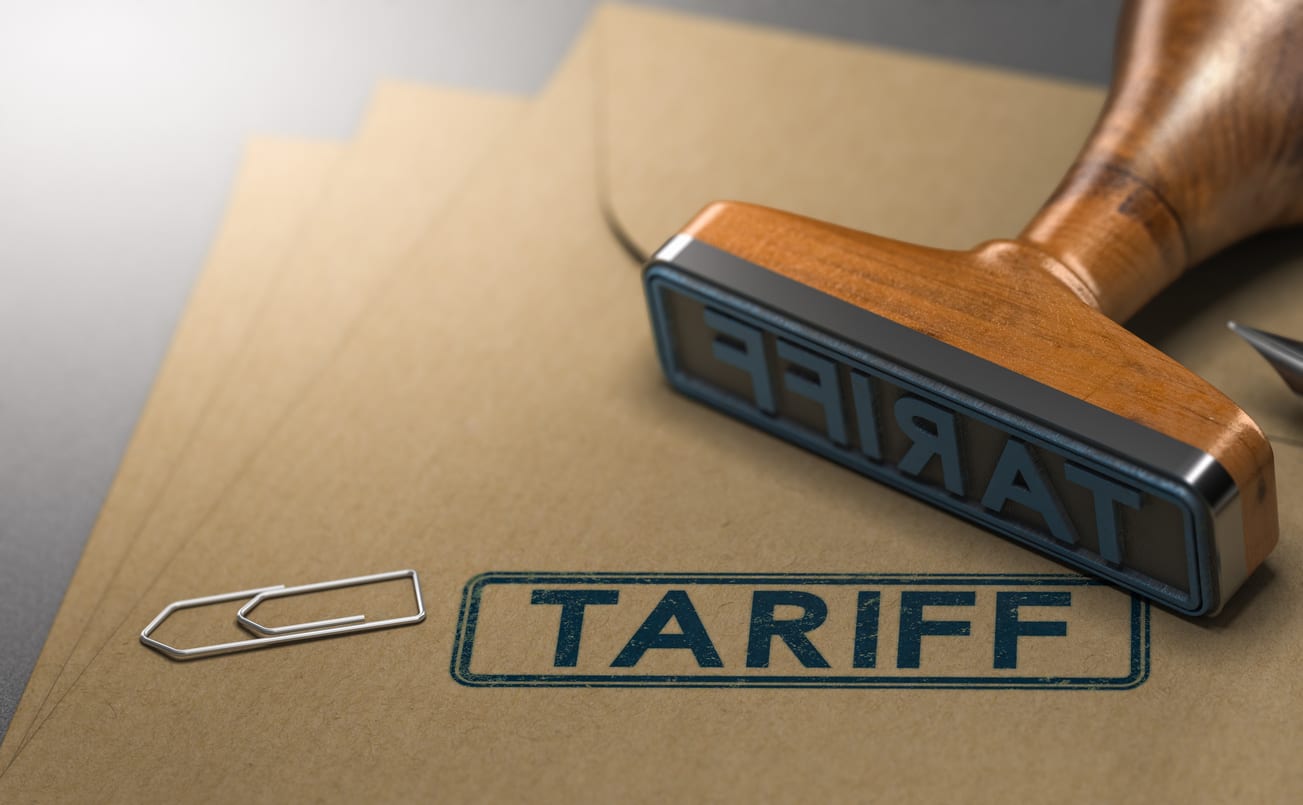Trump's China Negotiation Strategy: Tariff Relief And Rare Earths A Key Focus

Table of Contents
The Tariff War as a Negotiating Tactic
The Trump administration's imposition of tariffs on Chinese goods was a central element of its China negotiation strategy. The rationale behind this approach was multifaceted:
- Retaliatory measures against alleged unfair trade practices: The administration argued that China engaged in practices like intellectual property theft and forced technology transfer, justifying retaliatory tariffs as a means to level the playing field. This was a core element of the "America First" policy.
- Aim to reduce the US trade deficit with China: A substantial trade deficit with China was a long-standing concern for US policymakers. Tariffs were seen as a tool to reduce imports and potentially rebalance the trade relationship.
- Leveraging tariffs as a bargaining chip in negotiations: The administration strategically used the threat of tariffs and tariff increases as leverage to extract concessions from China during trade negotiations. This aggressive tactic aimed to force China to the negotiating table and agree to favorable terms for the US.
The impact of these tariffs was felt across both the US and Chinese economies. Specific examples include the 25% tariffs imposed on hundreds of billions of dollars worth of Chinese goods, impacting various sectors from consumer electronics to agricultural products. These tariffs led to increased prices for US consumers, disrupted supply chains, and contributed to economic uncertainty. While some argue that the tariffs successfully pressured China into concessions, others point to the negative economic consequences for both countries. Data from the Peterson Institute for International Economics, for example, suggests the tariffs led to significant losses in US GDP and job creation. The effectiveness of tariffs as a negotiation tool remains a subject of ongoing debate among economists and policymakers.
Rare Earths: A Strategic Resource in the Negotiations
Rare earths are a group of 17 elements crucial for various high-tech applications, including smartphones, electric vehicles, and military equipment. China holds a dominant position in the global rare earth mining and processing industry, controlling a significant portion of the global supply. This dominance translates into substantial leverage in international trade negotiations.
- China's control as a source of leverage in trade negotiations: China's near-monopoly on rare earth production allowed it to use the threat of restricting supply as a bargaining chip in negotiations with the US.
- US concerns about supply chain vulnerabilities and national security: The US dependence on China for rare earths raised concerns about supply chain vulnerabilities and national security implications. A disruption in the supply of these critical materials could severely impact various US industries and the military.
- Trump administration's efforts to diversify rare earth sourcing and domestic production: In response to these concerns, the Trump administration initiated efforts to diversify rare earth sourcing and bolster domestic production. This involved exploring alternative sources and providing incentives for domestic rare earth mining and processing.
The inclusion of rare earths in the trade negotiations highlights a broader strategic goal of the Trump administration: to reduce US economic dependence on China and strengthen its national security. While no specific agreements directly addressing rare earth trade were publicly announced as part of the "Phase One" deal, the issue remained a significant underlying factor in the negotiations.
Seeking Tariff Relief: The Negotiation Process
The trade negotiations between the US and China during the Trump administration were characterized by escalating tensions and fluctuating progress.
- Initial rounds of talks and escalating tensions: The initial rounds of talks were marked by significant disagreements and an escalation of tariff measures by both sides.
- "Phase One" trade deal and its provisions: The culmination of these negotiations was the "Phase One" trade deal signed in January 2020. This deal included some tariff relief, but it fell short of addressing many of the core issues. It primarily focused on increased Chinese purchases of US agricultural products and commitments related to intellectual property protection.
- Unfulfilled promises and ongoing disputes: Despite the "Phase One" deal, many disputes remained, and some of China's commitments were not fully met. This underscored the complexity of the US-China trade relationship and the challenges in reaching comprehensive agreements.
The success of Trump's approach to securing tariff relief is debatable. While the "Phase One" deal provided some relief, it did not fundamentally resolve the underlying tensions. The ongoing disputes and the lack of progress on key issues suggest that the aggressive tariff strategy did not fully achieve its objectives. Domestic political considerations also played a significant role, influencing the negotiation process and the timing of tariff announcements.
The "Phase One" Deal and its Limitations
The "Phase One" trade deal aimed to reduce some tariffs and increase Chinese purchases of US goods. However, it had several limitations. It largely postponed addressing structural issues, like forced technology transfer and intellectual property rights. The increased Chinese purchases of US agricultural products were not always met, and overall, the deal provided only limited and temporary tariff relief. Many experts argue that the deal's long-term impact on US-China trade relations remains to be seen and likely had only a minimal effect on the overall trade imbalance.
Conclusion
Trump's China negotiation strategy, marked by aggressive tariff imposition and a focus on securing reliable sources of rare earths, reflects a complex interplay of economic and strategic goals. While the "Phase One" trade deal offered some tariff relief, the long-term success of this strategy remains debatable. Understanding the nuances of Trump's approach to tariff relief and the crucial role of rare earths is vital for navigating the ongoing complexities of US-China trade relations. Further research into the lasting impacts of this strategy and the approaches taken by subsequent administrations is essential to fully grasp the evolution of this critical relationship. To learn more about the intricacies of Trump's China negotiation strategy and its long-term ramifications, continue your research using relevant keywords like "Trump China trade deal analysis," "rare earth supply chain security," and "US-China trade war impact."

Featured Posts
-
 Lowrys Strong Showing Valspar Championship Contention
May 12, 2025
Lowrys Strong Showing Valspar Championship Contention
May 12, 2025 -
 Los Angeles Palisades Fires A List Of Celebrities Who Lost Their Properties
May 12, 2025
Los Angeles Palisades Fires A List Of Celebrities Who Lost Their Properties
May 12, 2025 -
 Sucesion Papal Explorando A Los Potenciales Candidatos
May 12, 2025
Sucesion Papal Explorando A Los Potenciales Candidatos
May 12, 2025 -
 Watch The Robert F Smith Grand Slam Track Debut In Miami
May 12, 2025
Watch The Robert F Smith Grand Slam Track Debut In Miami
May 12, 2025 -
 Crazy Rich Asians Tv Show In Development What We Know So Far
May 12, 2025
Crazy Rich Asians Tv Show In Development What We Know So Far
May 12, 2025
Latest Posts
-
 Hear The Music Cp Music Productions A Father Son Collaboration
May 13, 2025
Hear The Music Cp Music Productions A Father Son Collaboration
May 13, 2025 -
 Cp Music Productions Experience The Harmony Of A Father Son Duo
May 13, 2025
Cp Music Productions Experience The Harmony Of A Father Son Duo
May 13, 2025 -
 Cp Music Productions Father Son Musical Duo Creates Unique Sound
May 13, 2025
Cp Music Productions Father Son Musical Duo Creates Unique Sound
May 13, 2025 -
 A Gen Z Influencers Journey From Kamala Harris Campaign To Congressional Race
May 13, 2025
A Gen Z Influencers Journey From Kamala Harris Campaign To Congressional Race
May 13, 2025 -
 From Social Media Star To Political Challenger A Gen Z Influencers Congressional Bid
May 13, 2025
From Social Media Star To Political Challenger A Gen Z Influencers Congressional Bid
May 13, 2025
